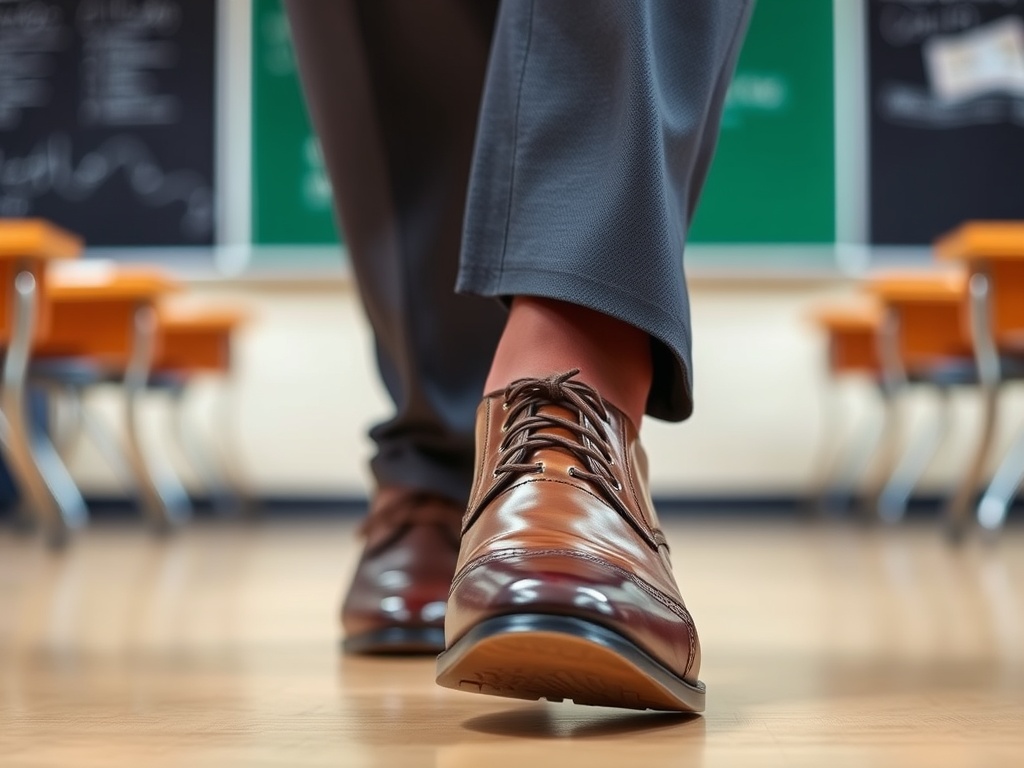Why My Suit and Tie Matter in the Classroom

I often receive curious glances while commuting to and from work. In an era dominated by athleisure, tech-bro hoodies, and a general decline in workplace formalities, my choice to don a suit and tie at 7 AM or 6 PM makes me appear as if I’ve stepped out of a time capsule. However, my formal attire is not merely a relic of the past; it is a deliberate statement of intent and professionalism. What we wear to work significantly impacts our mindset and the environment we create.
As a teacher, I require my students to adhere to a uniform. I impose a set of guidelines that fosters a collective identity, instills discipline, and ultimately provides a sense of freedom from the pressures of brand status. Naturally, students often resist this requirement, believing they are making an individualistic stand. Ironically, while they may despise the idea of a school blazer, they readily spend £150 on a ubiquitous North Face black puffer jacket, which ironically becomes their unofficial uniform. This paradox is often lost on them.
My choice to wear a suit and tie is both an act of solidarity and a personal expectation. If I ask my students to abide by a dress code, I feel it is only fair that I uphold the same standard. Wearing a suit empowers me. When I put on this attire, I step into my professional persona, much like a firefighter dons their protective gear or a surgeon prepares for surgery. It signals to my students, my colleagues, and even to myself that I am prepared for the challenges of the day.
Finding Power in Routine
This commitment to formal attire isn’t always convenient. At 7:10 AM, preparing student worksheets while dressed in a suit can feel impractical, akin to performing mundane tasks in evening attire. In those moments, I can almost empathize with the argument for “just wearing whatever is comfortable.” However, the slight inconvenience is well worth it. There is a certain strength in routine and in eliminating unnecessary choices. Consider the example of Steve Jobs, who famously opted for his black turtlenecks. We all, in our own ways, establish a personal code that aligns with our professional identities.
At 60 years old, I find comfort in my approach. Perhaps my perspective was shaped by my previous career as a journalist, a field where suits and ties were once the norm. There was a time when arriving in anything less than formal attire was simply unacceptable. I once sent a junior reporter home in the summer for wearing flip-flops, shorts, and a string vest—much to his astonishment. That was less than two decades ago. Today, if I were to walk into certain media organizations wearing a suit, I would likely receive the same bewildered looks I get while shopping at Tesco.
However, there is something profoundly significant about donning the “uniform” of one’s profession. Consider the case of Ukrainian President Volodymyr Zelensky, who faced criticism in the Oval Office for not dressing formally. His choice to wear military attire has become his professional uniform, conveying the message that he is leading a nation at war. Do those critical of him also care that Elon Musk appears in casual clothing during meetings at the White House?
My suit and tie may not resonate with everyone, but for me, it is liberating and, as a tall man, quite flattering. It eliminates one more decision from my day and immerses me in a “teacher” mindset. As for the odd looks I receive? I welcome them. After all, the North Face brigade isn’t exactly breaking the mold either.




